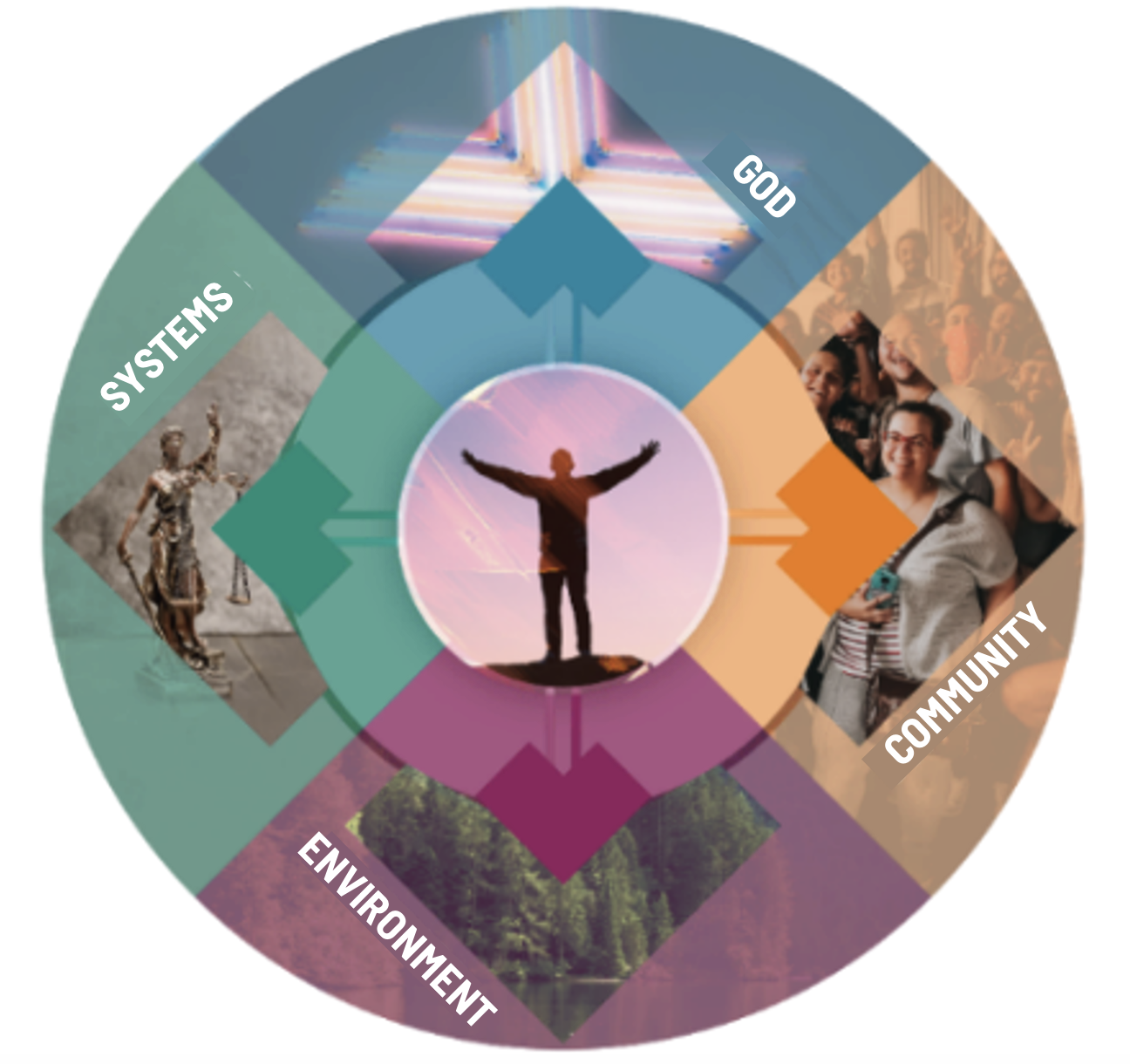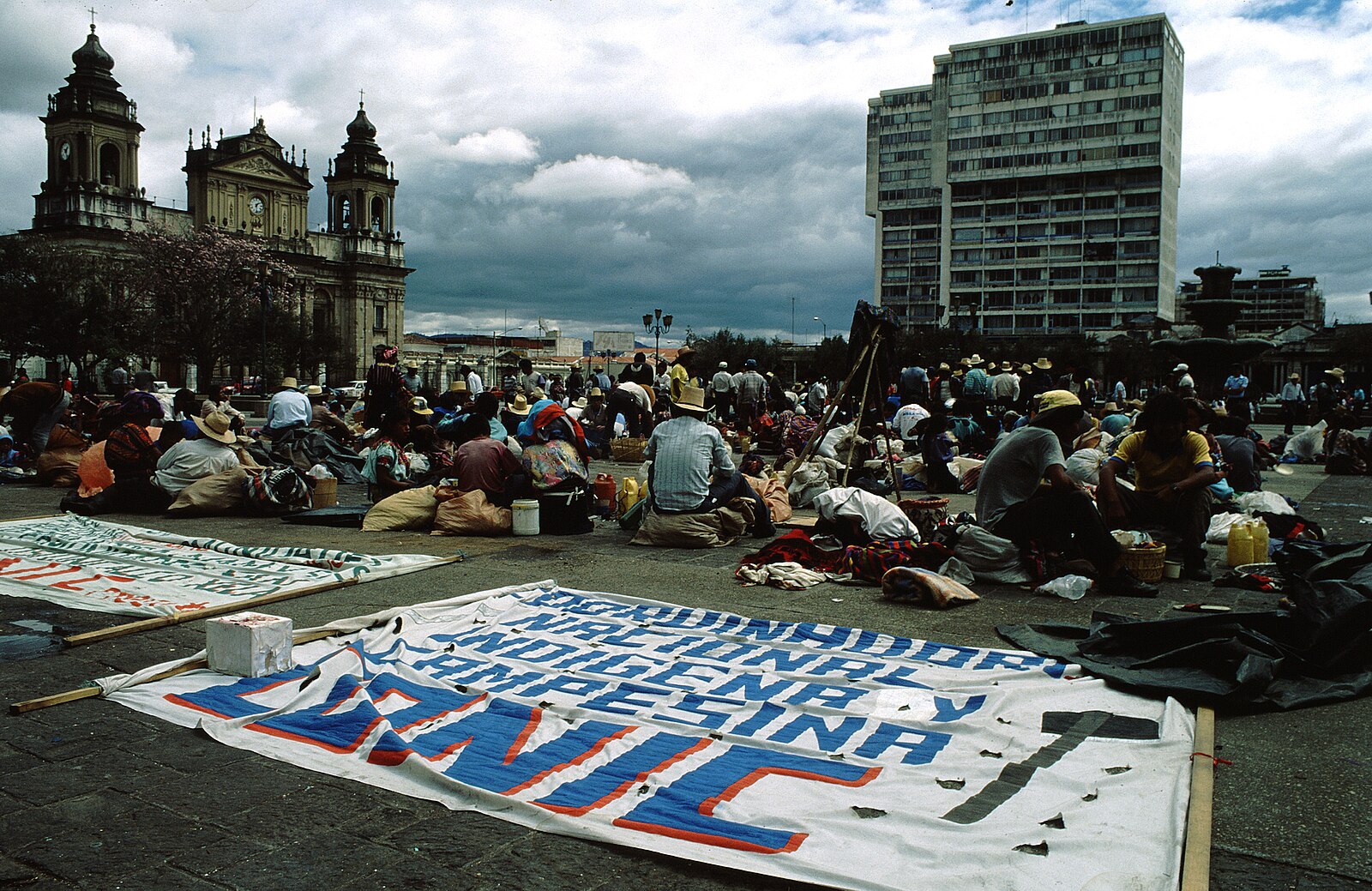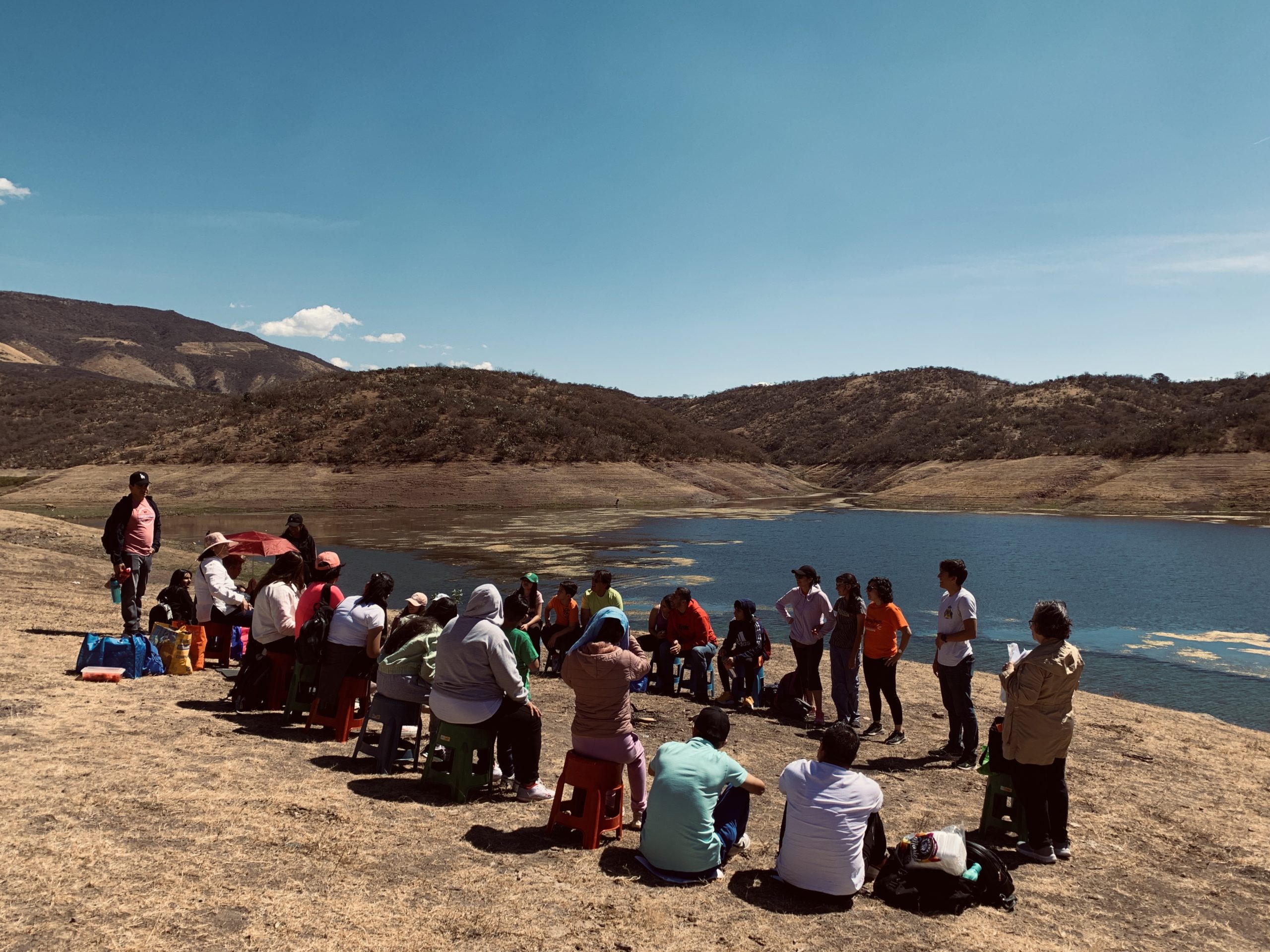What is Shalom? – A Definition
To build a culture of Shalom, we must first define precisely what this concept entails. The following pages explore this topic in depth. Old Testament theologian Walter Brueggemann states: “God’s dream is a world in which all creation lives according to the way of shalom.” He then expands on this idea: “This persistent vision of joy, well- being, harmony, and prosperity is not encapsulated in a single word or idea in the Bible; rather, a collection of terms is needed to express its multiple dimensions and nuances: love, loyalty, truth, grace, salvation, justice, blessings, righteousness… In recent discussions, the term used to summarize this integrative vision is shalom. Shalom is the essence of the biblical vision of a community that encompasses all of creation.”1

Interestingly, the word shalom permeates the entire biblical narrative, weaving like a central thread throughout the Scriptures and connecting much of the biblical message. It appears more than 350 times in the Old Testament and exactly 100 times in the New Testament with its Greek equivalent, eirene. Moreover, it functions as a key integrating principle within God’s transformative mission—from Genesis to the prophets, through the life of Jesus, and culminating in the Return of the King in Revelation, where the community of shalom is presented as the New Jerusalem. For this reason, shalom must be considered a central element in biblical interpretation, making it crucial to understand its meaning and the breadth of its connotations. This is especially important because shalom is a broad term that does not have a direct translation into English. It is often translated as “peace,” in the sense of the absence of conflict, but this interpretation is limited and does not capture its full richness. In reality, shalom encompasses concepts such as wholeness, well-being, justice, harmony, prosperity, tranquility, and healthy relationships with others. To better grasp its meaning, we can break it down into the following fundamental themes:2
Shalom Originates in God
The Bible presents many names for God: Yahweh, Elohim, El Shaddai, El Elyon, El Olam, El Roi, Adonai, Yahweh Jireh, Yahweh Nissi, Yahweh Raah, Yahweh Rapha, Yahweh Sabaoth, Yahweh Shammah, Yahweh Tsidkenu, and Yahweh Shalom. God is Shalom. As Gideon acknowledges in Judges 6:24, shalom is not merely a gift that God grants but something that flows from His very nature. There is no shalom apart from God because He is its source and essence.
With this in mind, Scripture reveals God as a profoundly relational being—an eternal communion that embodies the fullest meaning of shalom—what the Church later described as the Trinity. God is one in essence yet lives in community, where each person maintains a distinct identity while sharing life with the other two. The love that unites the three “persons” of the Trinity is so infinite that they are simultaneously one and three. This Trinitarian community, born out of love, is marked by care, justice, passion, understanding, respect, kindness, self-giving, and the pursuit of one another’s well-being. It is a relationship so deep and vast that it defies all description. This is what it means that Yahweh is Shalom!
There is no shalom apart from God because He is its source and essence.
This understanding of God has profound implications for how we read the biblical story. In fact, the idea of shalom unifies the Scriptures and serves as the central integrating principle of God’s transformative mission— from Genesis, through the prophets, to Jesus, and culminating in the return of the King in Revelation, where the shalom community is presented as the New Jerusalem. In other words, since God is Shalom, and we are created in His image, we are also designed to receive, reflect, and offer back to God the eternal shalom that He Himself is. Our calling is to manifest His Trinitarian love through our relationships with others and with creation.3 The ultimate purpose of creation, then, is to express and embody the shalom of God. This is why anyone who loves and promotes shalom reflects the divine character and can be recognized as someone who is like God.
Shalom Is Closely Connected to Justice

When justice is present in the relationships and systems of a society, reflecting the true nature of God, the result is both personal and collective well-being.4 The Bible calls this state shalom. Thus, shalom is made manifest whenever protection is provided to victims of injustice—widows, orphans, foreigners, and those who are vulnerable or impoverished—and when structures are established to build and promote justice.
In contrast, the abuse of power for personal gain at the expense of the most vulnerable destroys shalom, for oppression robs people of the wholeness and well-being inherent in this concept.5
Native American public theologian Randy Woodley expresses it this way: “Shalom is always tested in the marginalized of a society and becomes evident in the way the poor, oppressed, exploited, homeless, and needy are treated. A huge gap between the rich and the poor can be a clear indicator of the lack of shalom.”6 In other words, just as war is a visible sign of the absence of shalom between nations, injustice is a sign of its absence within a society. This lack of shalom translates into confusion, anxiety, social disorder, economic inequality, political oppression, and judicial corruption, leaving society without the possibility of well-being.7 Without justice, there can be no shalom.8 It only flourishes when corrupt structures and systems are replaced by new ones that reflect God’s vision for the world. Since God’s desire is goodness and peace for His creation, we can assert that any deterioration or absence of shalom is a clear manifestation of sin. In fact, sin, in a deep sense, can be defined as the absence of shalom.9
On the other hand, shalom is established where there is integrity, where deception and hypocrisy are eliminated, and where honesty, righteousness, and transparency reign. Therefore, living with justice and righteousness is an indispensable condition for forming a prosperous shalom community. Unfortunately, “in most cultures, the oppressed seek to overcome their oppression by inserting themselves into the same oppressive structures. They try to free themselves from oppression by becoming what they once despised.” The good news is that “the power of Christ enables people to confront the powers without becoming like them, freeing them from the temptation to integrate into the same structures that have oppressed them.”10 When people choose this path, shalom takes root and begins to transform society.
Shalom is Based on a Community Without Divisions

Shalom is not simply the absence of hostility; it is the joy of living in healthy, just, right, and harmonious relationships. It encompasses the individual, the community, and the web of relationships in which each person is immersed.11Tim Keller describes shalom as “complete reconciliation, a state of fullness in all dimensions—physical, emotional, social, and spiritual—because all relationships are good, perfect, and full of joy.”12 Living in shalom means experiencing the joy of dwelling with God, delighting in His presence and protection. It means enjoying life with ourselves, embracing our divine identity and calling. It is finding joy in living with those around us, both close and unfamiliar, celebrating human communion. It is delighting in our physical environment, appreciating its beauty. And finally, it is living in a world where human institutions and systems are just, affirming the order desired by God. In short, shalom fosters authentic relationships and restores the sense of community.13
However, shalom only manifests in a community that embraces it, an inclusive community where no one is excluded. It is a whole body in which commonly accepted divisions—male-female, Jew-Greek, master-slave, rich- poor, black-white—have been overcome, as declared in Galatians 3:28. It is a united community where everyone has embraced their identity in Christ, who is our shalom (Ephesians 2:14). Walter Brueggemann points out that in this community, “shalom always functions as a firm rejection of values and lifestyles that seek security and well- being manipulatively, at the expense of another part of creation, the community, or a brother or sister.”14 Such values and attitudes have no place in the presence of shalom.
Shalom Refers to Well-Being and Physical Health

Shalom manifests in the absence of physical threats such as war, disease, and hunger, and is expressed in prosperity, material abundance, and a profound sense of fulfillment and well-being. It implies being healthy and safe in body, mind, and condition, all within the context of a covenant relationship with God. Therefore, shalom encompasses material and physical well-being. It allows people to develop and prosper, to live in freedom without fear or obstacles preventing them from becoming what God wants them to be. It is being safe from forces that push us into anxiety and trap us in a mindset of scarcity and survival, making us believe we are always one step away from destruction. When a person or a nation experiences shalom, there is no lack in any aspect, whether individually or collectively. This meaning is powerfully reflected in Jeremiah 33:6-7, where God promises the restoration of Judah and Israel: “The days are coming, declares the Lord, when I will heal my people and will let them enjoy abundant peace and security. I will bring Judah and Israel back from captivity and will rebuild them as they were before.”
Shalom Relates to Creation

The good news does not begin with the birth of Jesus. It begins with the creation of a good heaven and earth, made by God in, through, and for Jesus (Colossians 1:16).15 On the sixth day, God looked at all His creation and declared it very good (Genesis 1:31). His dream was a world where all of creation lived according to the standard of shalom, reflecting His essence and bearing His image in various ways.16 This means that nature itself is included in shalom Walter Brueggemann describes it this way: “The central vision of the world’s story in the Bible is that all of creation is one, each creature in community with all the others, living in harmony and security toward the joy and well-being of all other creatures.”17
However, much of modern humanity perceives creation only as a means to an end, an object that can be exploited for personal benefit, instead of seeing it as a manifestation of God’s greatness. Few recognize that God enjoyed His creation and declared it good before the arrival of humankind. He did not create it primarily to meet our needs, but to proclaim His glory.18 Restoring shalom on earth, as Brueggemann explains, involves recognizing that “the Creator is calling us to experience His love and care in the created world around us.”19 It means joining God’s work in the care and restoration of creation. James Metzler emphasizes this point by stating: “From the disruption of shalom in the Garden of Eden to its complete renewal in the New Jerusalem, the purpose of all of God’s work is the restoration of shalom in His creation.”20
Shalom Has a Cosmic Reach – It is The world as it should be vs. The world as it is
To achieve sustainable and lasting change in society, we first need a vision of what the world is meant to be. The biblical vision describes a world of shalom: a place of rest, deep spiritual satisfaction, great joy, and abundant provision, where the deepest desires of all creation are fulfilled. It is a state of inner fullness, external harmony, and relational connection with everything else. This vision does not align with the dualistic conceptions with which many of us have been educated, which limit God’s interest to only the soul or human spirit. Instead, the Bible shows that all of creation has a spiritual dimension and longs for its redemption (Romans 8:19-24). The goal of biblical history, then, is the reconciliation of all things, both on earth and in heaven, with Christ as the head (Colossians 1:15-20).
For this reason, biblical salvation is not simply about taking souls to heaven, but about bringing all of creation—and all of our being—into the shalom God designed from the beginning.
All relationships fractured by sin must be renewed; everything that has been damaged must be restored; and healing must reach all dimensions of existence: spiritual, physical, emotional, individual, social, and political. For this reason, biblical salvation is not simply about taking souls to heaven, but about bringing all of creation—and all of our being—into the shalom God designed from the beginning. In other words, salvation is the restoration of all things to their original purpose. “It is based on shalom, the state of peace and fullness that all of God’s creation should experience.”21 As Bryant Myers explains: “Relationships must be restored in all the dimensions distorted by sin… First, in an intimate and serving relationship with God through Jesus Christ. Second, in healthy, just, and equitable relationships with ourselves and our communities. Third, in loving, respectful, and ‘friendly’ relationships with all who are ‘different’ from us. Fourth, in a fruitful and responsible relationship with creation.” And finally, in maintaining an ethical and satisfying relationship with the systems that order our life in society.22 This is the world as it should be.
The Goal of Everything

Shalom is the purpose for which humanity was created. It is the model established in Genesis 1 and 2. However, shalom is rarely our reality, as much of society is marked by depression, polarization, division, and hopelessness. “Instead of reconciliation, we experience separation. Instead of thriving, we experience frustration. Instead of interconnection, we experience brokenness. However, the GOOD news is that Jesus came to restore shalom. He came to establish a new kingdom, one in which shalom is the new reality. And He invites us to join Him in making this reality a tangible experience on earth as well as in heaven.”23
Now more than ever, we must proclaim and demonstrate the good news of the kingdom of God by establishing shalom in our world. When people see God’s power transforming hearts, restoring broken relationships, tearing down divisions, eradicating oppression, bringing justice, healing emotional wounds, and curing physical diseases, they will begin to recognize and accept that Jesus, the Christ of shalom, is God’s answer to a broken and fragmented world.24 However, if we reduce the Christian faith to a simple set of correct doctrines rather than a way of life; if we limit the richness of biblical revelation to a list of values that only defines what we reject instead of embodying new ways of being; and if we continue to see the church merely as a liturgical community and not as the ekklesia—the assembly of those called to seek the shalom of their city—then our faith will neither produce nor reflect shalom. People need to see God’s dream incarnated, not only in a faith community that sings and claps, but in concrete actions and tangible ways that make a real difference in people’s lives. “As long as there are hungry people in the midst of well-fed communities, there can be no shalom. As long as there are homeless and unemployed people among those who have jobs and wealth, shalom cannot exist. Shalom is not for the majority while a few suffer, nor is it for a few while many endure. Shalom is communal, holistic, and tangible. There is no private or partial shalom. The whole community must experience shalom or no one will.”25 Therefore, the church of Jesus Christ must be a church of shalom, or it is not a church at all.26
“Shalom is not for the majority while a few suffer, nor is it for a few while many endure. Shalom is communal, holistic, and tangible. There is no private or partial shalom. The whole community must experience shalom or no one will.”
Randy Woodley
The Mission of the Church: Building a Culture of Shalom. This means that the mission of the church is not simply to convert people, invite them to a Sunday service, teach them correct doctrine, or promote certain values in the public sphere. The heart of the ekklesia’s calling is to make disciples and equip them to build a culture of shalom, where each person grows as a lover, actor, and maker of shalom in their family, community, city, and world. Its Great Commission is about discipling nations—not just individuals—and transforming the structures that shape society. As Ghanaian theologian Kwame Bediako expresses: “The conversion of nations involves the transformation of the shared processes of thought, attitudes, worldviews, perspectives, languages, and cultural, social, and economic habits that shape the way societies think, act, and practice life.”27 The Bible does not idealize how this vision will be achieved. “It never assumes that shalom will come naturally or automatically.”28 Instead, it makes clear that living in shalom requires a deep change in our priorities and concerns. For this, we need a discipling community empowered by the Spirit of God to equip us to embody this vision. Living in shalom is, in fact, “a massive protest against the core values by which most of the world operates.”29
This lifestyle requires courage, deep commitment, perseverance, and the support of a community that encourages us along the way. It challenges us to take responsibility for our personal lives, to mature emotionally, and to live with integrity, truthfulness, and kindness. It also calls us to actively engage in the transformation of the structures that perpetuate injustice, to defend the oppressed, and to challenge those who seek their own well-being at the expense of the weak, the poor, the marginalized, or minorities.30 Finally, it commissions us to reform the world we know and align it with the world God has destined. This is God’s calling. This is the purpose of the church.
Footnotes
- Walter Brueggemann, Peace (St. Louis, MO: Chalice Press, 2001), 14. ↩︎
- The following definitions stem, in part, from Perry B. Yoder, Shalom: The Bible’s Word of Salvation, Justice, and Peace. Institute of Mennonite Studies Series Number 7. Newton, KS: Faith and Life Press, 1987, p. 9.; Arthur F. Glasser, Announcing the Kingdom, 130; Bryant Myers, Walking with the Poor; Robert Linthicum, City of God City of Satan; Randy Woodley, Shalom and the Community of Creation: An Indigenous Vision ↩︎
- Gregory A. Boyd, Is God to Blame? Moving Beyond Pat Answers to the Problem of Suffering (Downers Grove, IL: InterVarsity Press, 2003), 37–38. ↩︎
- Harold Coward and Gordon S. Smith, eds., Religion and Peacebuilding (Albany: State University of New York Press, 2004), 154. ↩︎
- Toward a Definition of Shalom,” Pacificador99, February 28, 2011, accessed November 2, 2020, https://pacificador99.wordpress.com/2011/02/28/toward-a-definition-of-shalom/ ↩︎
- Randy Woodley, Shalom and the Community of Creation: An Indigenous Vision, (n.p.; n.d.), 15. ↩︎
- Brueggemann, Peace, 16-18. ↩︎
- Ken Wytsma, Pursuing Justice: The Call to Live and Die for Bigger Things (Nashville, TN: Thomas Nelson, 2013), 27. ↩︎
- Woodley, Shalom and the Community of Creation, 23. ↩︎
- Bruce Bradshaw, Change Across Cultures: A Narrative Approach to Social Transformation (Grand Rapids, MI: Baker Academic, 2002). ↩︎
- Coward & Smith Ed., Religion and Peacebuilding, 154. ↩︎
- Tim Keller, Generous Justice: How God’s Grace Makes Us Just (New York: Dutton, 2010), 174. ↩︎
- Woodley, Shalom and the Community of Creation, 24. ↩︎
- Brueggemann, Peace, 19 ↩︎
- Christopher J. H. Wright, The Mission of God’s People: A Biblical Theology of the Church’s Mission (Grand Rapids, MI: Zondervan Academic, 2010), 47–48, Kindle edition. ↩︎
- Woodley, Shalom and the Community of Creation, 20. ↩︎
- Walter Brueggemann, Living Toward a Vision: Biblical Reflections on Shalom (New York: United Church Press, 1982), 15–16. ↩︎
- Woodley, Shalom and the Community of Creation, 53. ↩︎
- Ibid., xix. ↩︎
- Mission and the Peace Witness: The Gospel and Christian Discipleship,” Anabaptist Witness, vol. 1, no. 1 (2014): 44. ↩︎
- Wytsma, Pursuing Justice, 24. ↩︎
- Myers, Walking with the Poor, 50. ↩︎
- Striving for Shalom,” SOS Memphis, accessed November 2, 2020, https://sosmemphis.org/blog/striving-for-shalom ↩︎
- David L. Watson and Paul D. Watson, Contagious Disciple Making: Leading Others on a Journey of Discovery(Nashville, TN: Thomas Nelson, 2014), 150. ↩︎
- Woodley, Shalom and the Community of Creation, 21. ↩︎
- Craig L. Nessan, Shalom Church: The Body of Christ as Ministering Community (Minneapolis, MN: Fortress Press, 2010), 9–10. ↩︎
- Kwame Bediako, “Theological Reflections,” in Serving the Poor in Africa: Cases of Churches and Organizations Engaged in Holistic Ministry, ed. Tetsunao Yamamori, Bryant L. Myers, and Kenneth L. Luscombe (Monrovia, CA: MARC, 1998), 184. ↩︎
- Brueggemann, Peace, 19. ↩︎
- Ibid., Peace, 51. ↩︎
- Woodley, Shalom and the Community of Creation, 22. ↩︎
Image Directory
- “Shalom”, Camino Alliance Archive.
- “GuatemalaCity 002”, Reinhard Jahn, Wikimedia Commons, CC BY 2.0 Germany
- “Joyful team of multi-ethnic young people”, Giuseppe Lombardo
- “Fundación Creo Mobile Clinic”, Camino Alliance Archive.
- “Little girl picking oranges”, Stefano Oppo
- “Día de campo en comunidad”, Comunidad FAST Archive.

